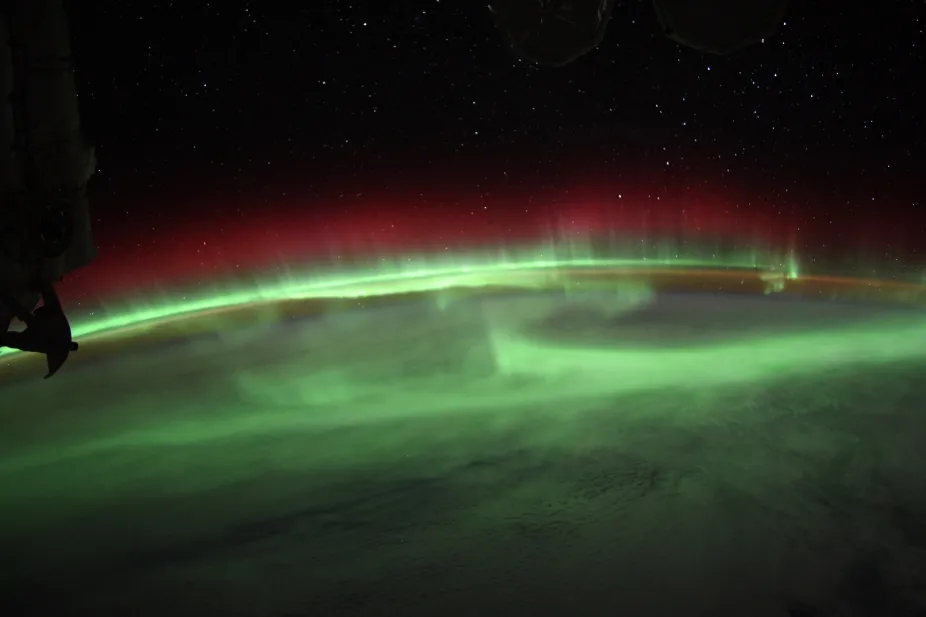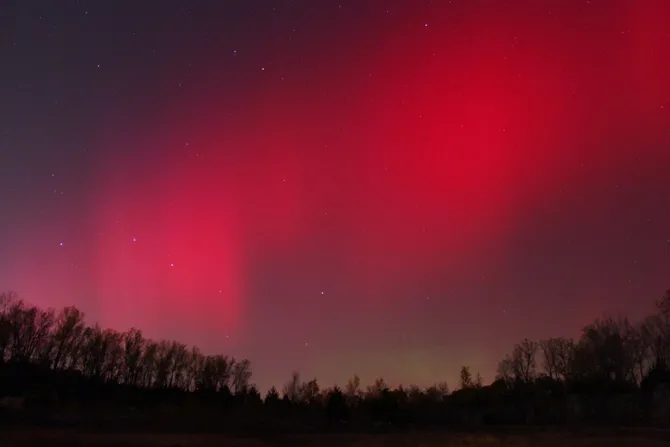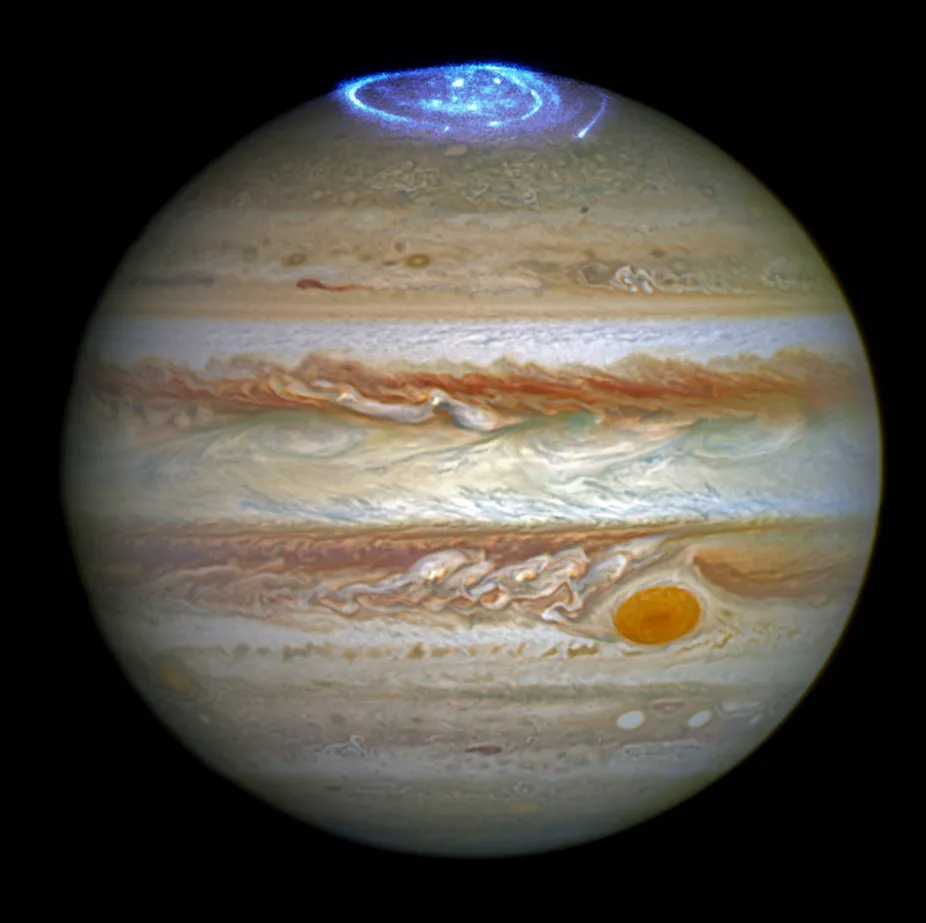Auroras: The Northern and Southern Lights
Have you ever seen the dazzling, dancing lights of the aurora in the night sky? The closer you are to the North or South Pole, the greater your chances are of seeing this amazing spectacle. In the Northern Hemisphere, it is called an aurora borealis or the northern lights. In the Southern Hemisphere, it is called an aurora australis or the southern lights.

A brilliant stream of the southern lights or aurora australis is photographed from the International Space Station as it orbits 270 miles above the Indian Ocean near Antarctica on August 17, 2022.
NASA/Bob Hines
What Causes the Aurora?

Particles from solar eruptions bombard Earth’s magnetic field and enter the atmosphere at regions called auroral ovals. These particles interact with gases in the atmosphere, creating auroras.
Tromsø Geophysical Observatory, UIT the Arctic University of Norway
Auroras are a natural interaction between the Sun and Earth's atmosphere. Our Sun generates a strong solar wind, which carries about one million tons of extremely hot plasma (electrons, protons, and other particles) away from the Sun every second. Earth’s magnetosphere acts like a shield that protects us from most of this constant solar wind, deflecting it around Earth.
During a solar storm, such as a solar flare or coronal mass ejection, a large amount of plasma hurls through space at high speeds as part of the solar wind. When this extra solar energy collides with Earth’s magnetosphere, some of the electrically charged particles move down strong magnetic field lines at the North and South Poles and become trapped in Earth's atmosphere. These particles bounce from the North Pole to the South Pole and back again, transferring energy to molecules in Earth’s atmosphere as they go. The colorful, glowing lights of the aurora result when these energized molecules release their extra energy.
Why Are Auroras Different Colors?

An all-red aurora was captured in Independence, Missouri, on October 24, 2011, following an exceptionally strong coronal mass ejection. Seeing an aurora from low latitudes, coupled with the occurrence of the rare red aurora, is a spectacular sight to behold.
Tobias Billings/NASA
Auroras occur within one of Earth’s upper atmosphere layers, the thermosphere. Solar particles trapped here interact with different types of gas molecules, mostly nitrogen and oxygen, resulting in unique, colored displays of light. Oxygen gives off green and red light, while nitrogen glows blue and reddish-purple. Green-colored auroras are most frequent, resulting from interactions with oxygen molecules at lower altitudes (between 100-300 km or 62-180 mi), while the less commonly occurring red auroras form from interactions with higher altitude (above 300 km or 180 mi) oxygen molecules.
Do Auroras Affect Earth?
Auroras have delighted and inspired curiosity in humans throughout time. The only significant impact to Earth associated with auroras is a possible disruption of radio communications as charged particles from the Sun create a disturbance in Earth’s magnetic field. When the magnetic disturbance is particularly strong, auroras can sometimes be seen farther from the poles, in mid-latitude locations.
Other Planets Have Auroras, Too!

A composite image of auroras in Jupiter’s atmosphere was captured by the Hubble Space Telescope.
NASA, ESA, and J. Nichols (University of Leicester)
Earth isn’t the only planet that experiences auroras. Any planet with an atmosphere and a magnetic field is likely to have auroras. Spectacular auroras have been observed on Saturn and Jupiter.